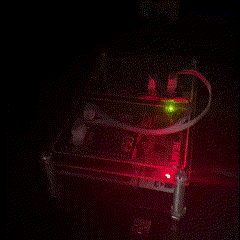
OpenCV Facial Detection
I have designed and implemented a Facial Detection application utilizing Python 3.10, OpenCV 2, and NumPy libraries. The application captures live video feed from user's webcam and superimposes a bounding box over the user's face and eyes, utilizing Haar-cascades, a machine learning based object detection technique provided by OpenCV. This project demonstrates my ability to effectively utilize programming languages and computer vision libraries to create a real-time facial detection solution.

STM32 Pacemaker
I have engineered a back-end control system for a pacemaker device utilizing an STM32 microcontroller, Simulink, and the FRDM-K64F development board. The system was implemented by utilizing a combination of Simulink, C++, and Stateflow to design the control logic for the pacemaker. Additionally, the pacemaker incorporated sensing circuitry, GPIO pins, and UART serial transmission, as well as a user-friendly graphical user interface (GUI) which enables the user to save pacemaker configurations with eight different pacing modes. To ensure efficient development and collaboration, I have employed version control through the use of Git.
Student Number Finite State Machine
I have determined the minimal necessary number of counter and memory bits required for a finite state machine (FSM) to cycle through my student number on a seven-segment display by utilizing J~K flip-flops and logic gates. Additionally, I have optimized the usage of logic chips through the application of truth tables and 3D K-mapping techniques, resulting in a more streamlined circuitry and a reduction in the number of gates utilized.